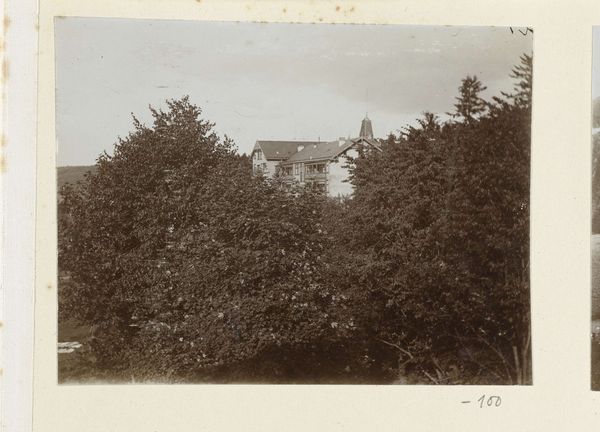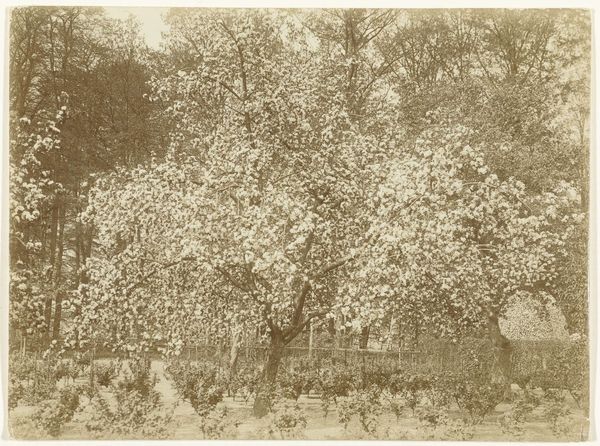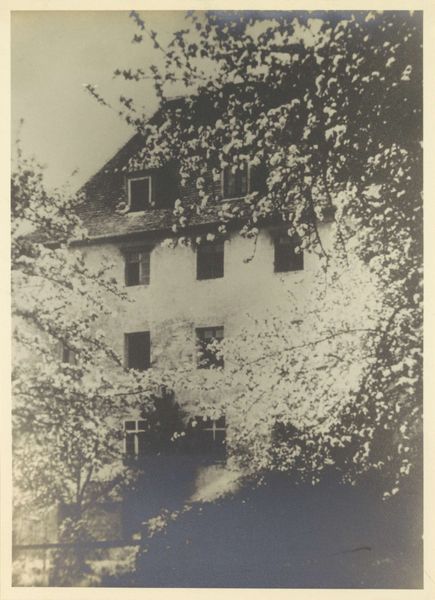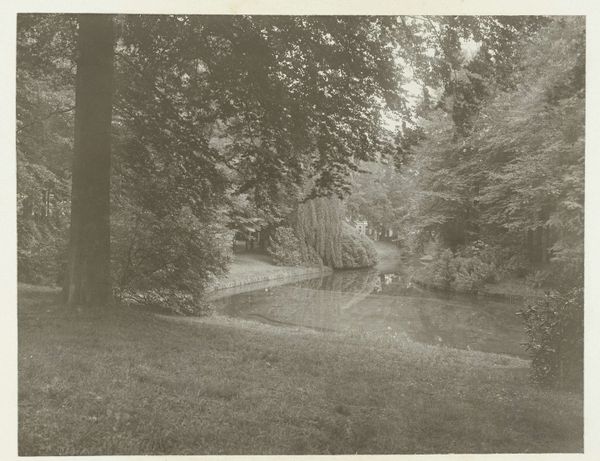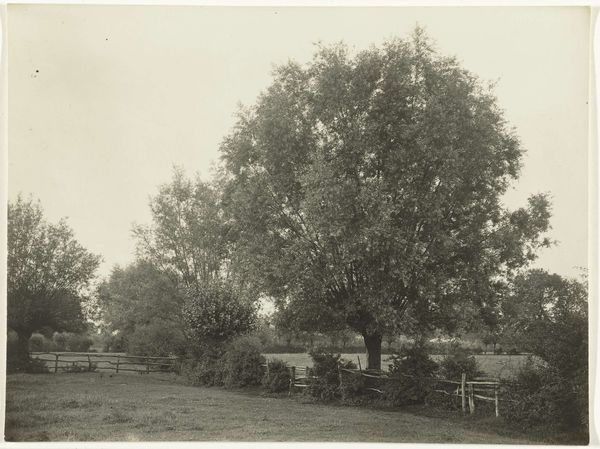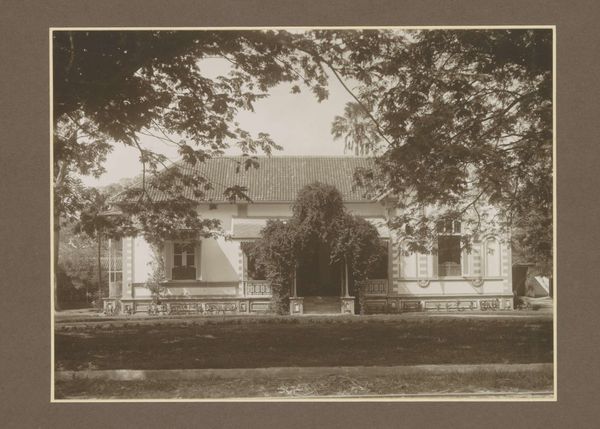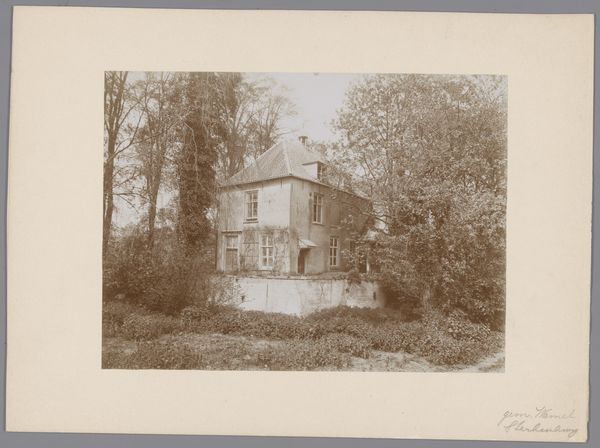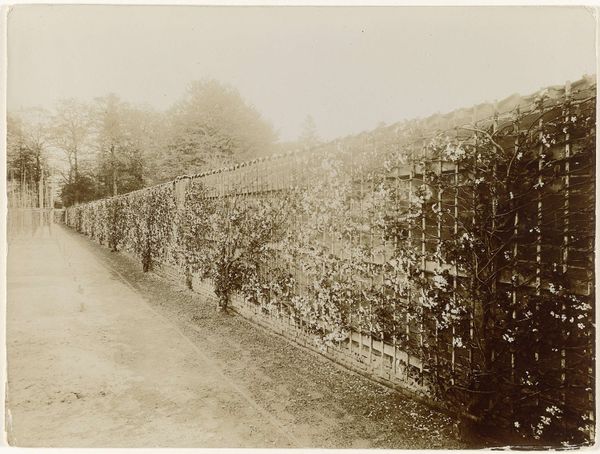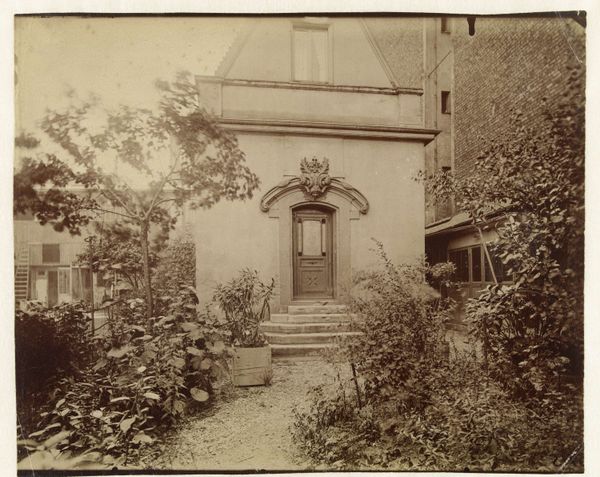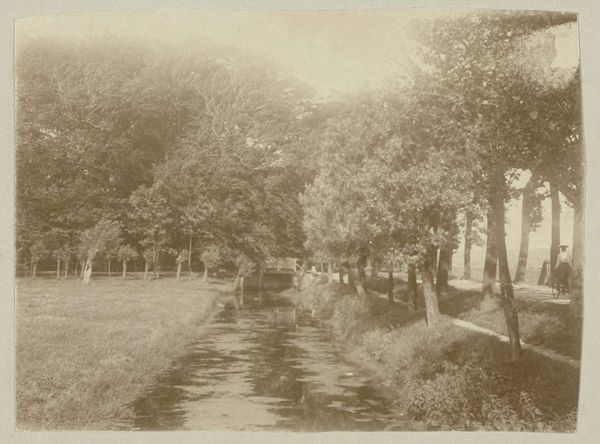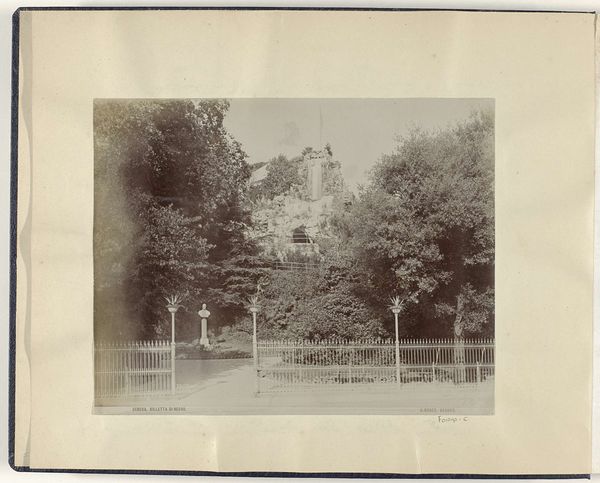
photography
#
organic
#
garden
#
natural world styling
#
countryside
#
organic shape
#
landscape
#
natural composition
#
agricultural
#
nature
#
photography
#
nature friendly
#
nature environment
#
agriculture
#
picturesque
#
naturalism
Dimensions: height 188 mm, width 240 mm
Copyright: Rijks Museum: Open Domain
Curator: Looking at this, I feel overwhelmed by growth, by a sort of joyful profusion. The house seems almost consumed by the roses. Editor: Indeed. What we have here is a photograph entitled "Tuin en huis begroeid met rozenstruiken, Berkeley," placing it sometime between 1890 and 1920. Its creator remains anonymous. What’s compelling is the almost wilful anonymity of the photographer – someone deeply engaged with their local world yet choosing to remain unseen. Curator: Absolutely. Roses, of course, carry immense symbolism. Think of their connection to Aphrodite, to romantic love. But here, enmeshed with a domestic space, it reads differently. There’s a wildness tamed, or perhaps a taming gone wild. The home itself is being transformed into something natural, almost primordial. Editor: I find myself considering Berkeley in this era. The Arts and Crafts movement was flourishing, valuing handcrafted artistry and a return to nature, specifically as a reaction to industrialisation. Could this image be read as a statement against the rapid changes sweeping through society? Curator: It’s a potent idea. The roses become symbolic of a desire for an idyllic past. Consider also the rose as a symbol of secrecy, derived from the Roman "sub rosa"—"under the rose". The house is hidden, holding secrets, guarded by the very beauty that obscures it. The sheer volume of roses feels protective, nurturing. Editor: I’m interested in the social implications. Was this the home of a wealthy family embracing the naturalistic aesthetic or something more grassroots? Who gets to cultivate this kind of abundance, and what does that say about societal structures? The roses almost act as a curtain, hiding privilege, or perhaps, a haven from the world. Curator: Yes, or perhaps from the camera itself, as though nature colludes in anonymity! This isn't simply a photograph *of* nature, but an image of nature actively obscuring, resisting observation. Editor: It seems that even through something as ostensibly apolitical as a rose-covered cottage, one finds narratives of cultural memory, social structures, and even quiet resistance. Curator: Indeed, prompting us to consider what's visible versus what is felt—and what it truly means to create, or inhabit, a "home".
Comments
No comments
Be the first to comment and join the conversation on the ultimate creative platform.
